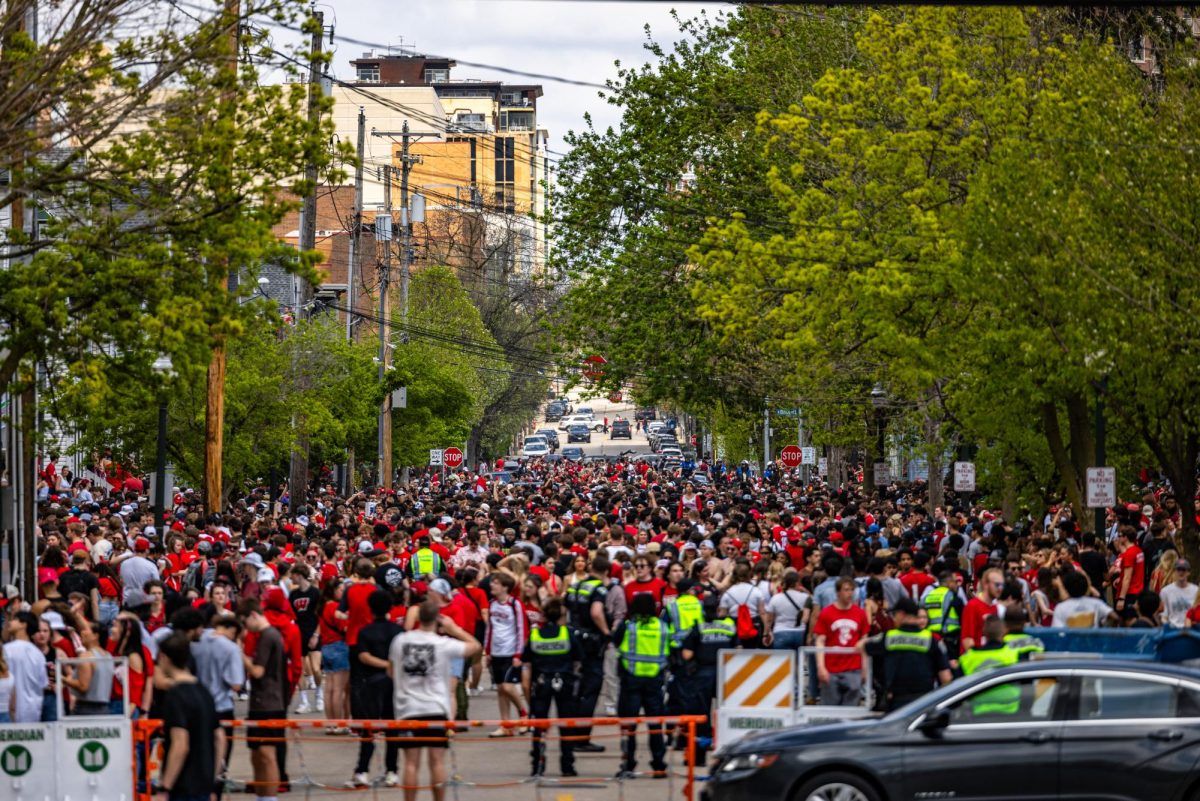Ideology, theory and didacticism have permeated the culture and times of individuals born between the Carter and Reagan years. Even cartoons hail high-falutin’ critiques and carry subversive subtext. In all of this, there is no realm more imbued with single message heavy-handedness than contemporary art.
In “Universal Experience: Art, Life, and the Tourist’s Eye” at Chicago’s Museum of Contemporary Art, curator Francesco Bonami asks the museum visitor to step away from seeing the world through a single critical frame. “Most exhibitions are mounted around a thesis. In a sense this has no central thesis,” Bonami said. “This exhibit is not about what is put into order but what is chaotic.”
Using all the museum galleries and the exterior, Bonami has executed an absolutely symphonic chaos — almost in Ovid’s sense of giving meaning to disorder — that both argues for and destroys conventional notions of universal human experience. His curatorial direction does this by placing viewers in the position of a tourist and the culture being visited by tourists. “I could have only curated this show in Chicago because it’s a world unto itself, because of its centralized location and place as a tourist destination,” Bonami said of using the MCA space as manifesto.
Like the role mass-market museum events play in driving the world’s biggest industry, tourism, Bonami and the MCA have made “Universal Experience” deliberately accessible. One often feels like they are living a 3D movie not an art exhibit. This is especially true in giant multimedia installations like Doug Aitken’s ‘The Moment.’ Aitken uses the aesthetic timing of Hollywood trailers to evoke what-happens-next feelings as it pulls participants into a riptide of sound and video.
What Bonami’s done is breathtaking, heart racing but most importantly, the exhibit discards artist as ideologue and repositions the role as fellow traveler, keen observer and participant in tiny ritual to bacchanal. Instead of presenting a narrow political statement, the art asks us to take a broad literary perspective. Bonami and the artists’ position contemporary art as the product of a life lived wide-awake.
Work covers the entire four floors of the museum and ranges from representational sculpture to conceptual video. When it’s jarring, it gives a thrilling disorientation.
In the exhibit, American and international art perspectives butt up against each other without drawing any “us-to-them” dichotomies.
In Holdt’s work, and other pieces in the show, we witness poverty, we witness wealth, but artists resign from social commentary, asking us to celebrate an essential naked human frailty.
When Holdt was facing eviction, he decided to accept failure as opportunity and traveled America taking photographs. Instead of simply snapping and moving on like a 35mm cultural anthropologist, he lived with his subjects. “He didn’t believe you could know someone unless you lived with them,” Bonami said.
Linking disparate art vocabularies, minimalist and representational, “Universal Experience” invites the viewer to view Kapor’s simple contemplation of color and material as speaking to that same fragility in Holdt’s photos.
Along the way, every piece is a short story, asking us to marvel over things just as they are. One standout installation is “Common Trip,” by Roman Ondak. The Slovakian artist described major tourists destinations he had visited to other people and instructed them in drawing a representation of the place. “Drawing is about pulling out the subconscious and seeing how we create parallel images,” Ondak said.
Ondak pointed out that many of the buildings represent locales Slovakians couldn’t visit before the Iron Curtain fell.
Viewers are often asked to make leaps of faith into the deep end of the human condition. Piotr Uklanski’s bird’s-eye photo of Brazilian soldiers forming the face of Pope John Paul II, a piece Uklanski executed as the Polish representative to the Sao Paulo Biennial, discusses how Brazilian and Polish cultures are knotted together through Catholicism. Several pieces like Uklanski’s challenge dominant discussions on post-colonialism and dare viewers to be comfortable with the tension of synthesized realities.
Bonami is doing something brave in this exhibit by fusing historic Western notions of the heroic individual with post-modern modes of art production. Even more daring, he does it with a positivist approach, often with a knowing romanticism about humankind’s fragmented state.
“Universal Experience” is, in the end, an answer to three decades of fierce debate in the art world over Western and non-western modes of representation.
In certain forums of the culture war, multiculturalism has been at roiling odds with the western concept of universalism. Identity politics still pervades debates on University of Wisconsin-Madison soil but in other academic arenas even the left has begun to abandon more divisive discourses and view the compartmentalization of multicultural art as the ‘cute-ifying’ of human epics from non-European cultures. Bonami’s curatorial artistry attempts to marry the two sides of the debate. He succeeds in stratospheric leaps and bounds.
Bonami’s own personal allegory for mounting “Universal Experience” at the MCA is Chicago’s 1893 World Exposition. “To think that without modern communication 27 million people from around the world came to have this one experience,” the curator said.
It’s rare when art dares to be grand enough to move us to think about our tiny individual place between the configuration of world history and globalizing human relationships. For viewers who are Carter or Reagan babies, the exhibit speaks to a rising desire in this generation to resolve hybrid identities and speak publicly from a garbled internal voice.













